



































































































 By Stacey Smart stacey.s@dairystar.com
By Stacey Smart stacey.s@dairystar.com
Wis.

the



2000, Aaron LaVoy had never seen a
much less worked with one in any capacity. However, the Navy veteran would soon become a world-famous hoof trimmer achieving success beyond his wildest dreams. Now, LaVoy is the guy professional trimmers from across the globe turn to for rening their craft.

Internationally known for developing a method of trimming, LaVoy made a discovery that revolutionized the way hooves are trimmed. The moment of truth came for LaVoy when he began cutting open and examining cadaver cow feet. His outsider’s eye saw something not seen in the industry before. From there, LaVoy pioneered the balanced method of trimming – the goal of which is balanced bone structure and even sole thickness.
“You can’t just make feet smaller; you have to make them better,” LaVoy said. “Cows wear more evenly when trimmed according to the balanced method, which practically eliminates corkscrew claw and white line lesion.”



Originally from the Detroit, Michigan, area, LaVoy came from an autoworker family. After graduating from high school, he served four years in the military and, while in Japan, met a girl from Wisconsin. The couple returned to

her home state and settled down near Appleton.
LaVoy had a job lined up that had nothing to do with dairy. But when his future boss asked if LaVoy could help her husband on his farm for a few days, LaVoy said yes. Little did he know, the temporary job on a custom heifer rais-
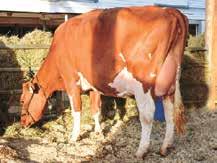

ing operation would fuel his life’s passion.
“I loved the work so much I couldn’t believe I was getting paid for it,” LaVoy said. “When they offered me a full-time position on the farm, I didn’t have to think about it.”
LaVoy eventually became the

herdsman at the 1,000-head heifer facility and remained there for four years.


“We had a hoof trimmer coming, and I admired that job,” LaVoy said. “I’m an ambitious person, so I looked into it.”



On Thanksgiving Day 2003, it became clear to LaVoy that he wanted to become a hoof trimmer. Picking a lessthan-glamorous job in an industry in which he had little experience, LaVoy chased after his newfound career ambition with a zealous heart. Before he had a single customer, LaVoy racked up $40,000 in credit card debt to purchase a brand-new trimming chute and pickup truck.


“Everybody said I was crazy,” LaVoy said. “Even my family thought I was nuts. I had no experience. The bank laughed at me, so I literally used highinterest credit cards to fund my business. I also took out a second mortgage on the house.”
Within three months, LaVoy was booked solid and had to turn down business.
“I studied under my uncle who was a farrier and a chiropractor – that’s key to what I do,” LaVoy said. “Trimming is about bone structure. I see the hoof and the bones. They’re two different things. If I didn’t get enough business, I thought I could be a farrier too.”
LaVoy also attended hoof trimming school where he learned the Dutch method of trimming.
“That method did not add up to what I was learning with horses,” he said. “I didn’t know what it was, but I didn’t feel right about it. So, I went
running behind orders. Milk availability has tightened despite growing output, said DMN.
Looking westward, export cheese demand remains strong, especially from Asian buyers. Cooler weather is contributing to cow comfort and thus milk output.
Butter climbed to $3.20 per pound Tuesday and stayed put, up 2.50 cents on the week and $1.3650 above a year ago. There were no sales all week at the CME.
Butter demand is exactly where contacts expected it to be in mid to late October: vigorous, said DMN. Plants are churning or micro-xing to their full ability to keep up with demand, but minds ponder how long the price will remain in the clouds. Cream availability continues to grow, and contacts do not foresee a tight cream market in the near-term, particularly as the holidays approach, said DMN.

The higher milk output and resulting cream supply is a result of cooler weather out west, and milk is moving steadily into Class II production. Some plants are acquiring additional cream to maximize production and meet current demand. Other plant’s schedules are limited due to labor shortages or scheduled maintenance. Some retail customers are fervently looking for additional butter, said DMN, as they underestimated their fourth quarter needs.
Grade A nonfat dry milk fell to the lowest price since Oct. 5, 2021, closing Friday at $1.42 per pound, 11.75 cents below a year ago. Thirteen cars sold on the week.
CME dry whey closed Friday at 44 cents per pound, a quarter-cent lower and 17.75 cents below a year ago, with one sale reported on the week at the CME.

Checking demand; August total cheese utilization hit 1.2 billion pounds, up 1.9% from August 2021, up 1.6% domestically and up 5.9% on exports, according to HighGround Dairy’s Lucas Fuess in the Oct. 24 Dairy Radio Now broadcast.
August marked the strongest year-over-year gain since March, he said, driven mostly by rm demand for American-style cheese. And, while the data is delayed here in October, he said it helps explain why prices have remained above $2.
Butter disappearance totaled 185.6 million pounds, down 3.3% from a year ago, with domestic usage down 7.5%, while exports were up 118.8%. Fuess blamed the higher prices for the domestic downturn, but the weaker butter production and declining stocks keep the price rmly supported. He warned that the timing of the butter price downfall could come any day. As soon as end users realize they are good on supply into the holidays and traders become concerned over holding that last load of expensive butter, then we might tumble pretty quickly.
Nonfat-skim milk powder totaled 221.7 million pounds, down 3% from a strong year ago number. Domestic use was up 39.8% while exports were down 17%.
U.S. uid milk sales looked a little better in August. The latest data shows sales of U.S. packaged uid products totaled 3.6 billion pounds, down just 0.8% from August 2021. Conventional product sales totaled 3.4 billion, up 0.7% from a year ago. Organic products, at 241 million pounds, were up 2.1% and represented 6.6% of total sales for the month.
Whole milk sales totaled 1.26 billion pounds, up 3.1% from a year ago, up 1.2% year to date and represented 34.2% of total sales YTD. Skim milk sales, at 186 million pounds, were down 2.8% from a year ago and down 8.2% YTD.
Packaged uid sales for the eight months totaled 28.6 billion pounds, down 2.2% from 2021. Conventional product sales totaled 26.6 billion, down 2.3%. Organic products, at 1.9 billion, were down 1.5% and represented 6.7% of total sales.
The November federal order Class I base milk price was announced at $24.09 per hundredweight, up $1.38 from October, $6.11 above November 2021, and the highest November price ever, topping to the November 2014 high by 3 cents. It also equates to $2.07 per gallon, up from $1.55 a year ago. The 11-month average stands at $23.76, up from $16.61 a year ago and $16.64 in 2020.

Fluid consumption used to utilize over a third of U.S. milk output, but those days are long gone. The Sept. 28 Daily Dairy Report stated that uid use in the rst six months of 2022 only accounted for 18.5% of U.S. total output, down from 18.9% in 2021, but compares to 25.3% in 2012, for example.
As I pointed out last week, Coca-Cola’s Fairlife product is making a gallant attempt to bring milk drinkers back. It has reportedly seen double-digit growth this year, according to the Sept. 26 Dairy Industry SmartBrief.
The Oct. 7 Dairy and Food Market Analyst said
plant-based brands are embracing dairy because the plant-based category is no longer growing, and many companies are nding themselves in trouble. For example, compared to its peak, Beyond Meat’s stock price has decreased by 94%.
Similarly, oat milk producer Oatly’s stock has decreased by 92% compared to its peak, and the Very Good Company, a Canadian plant-based cheese and meat brand, is down 98% from its high. Though not to the same extreme, Danone, the owner of plantbased milk company Whitewave Foods, has seen its stock price struggle. Since announcing the purchase of Whitewave July 16, the company’s stock has decreased by nearly one-third, the Analyst said.
Down on the farm, margins continued to decline the rst half of October on weaker milk prices and steady to higher cost feed, according to the latest Margin Watch from Chicago-based Commodity and Ingredient Hedging LLC.
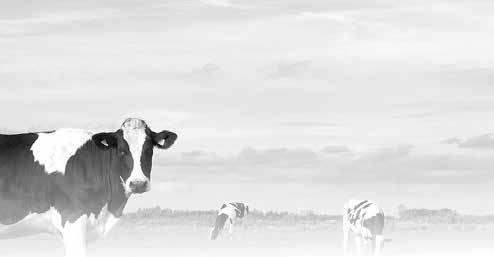

USDA’s October WASDE report conrmed lower yield and production estimates for corn and soybean crops which reduced forecasted ending stocks, the MW reported. This along with a slower-than-normal start to planting in Argentina due to abnormal dryness has helped to maintain a rm tone in the markets. Although milk prices have declined recently, they remain elevated from a historical perspective, supported by strong exports and butter prices.
Speaking of crops, the USDA’s latest Crop Progress report shows the U.S. corn harvest is 45% complete, as of the week ending Oct. 16, up from 31% the previous week, 5% behind a year ago and 5% ahead of the ve-year average. 53% was rated good to excellent, 7% behind a year ago.
The report also shows 96% of the soybeans dropping leaves, 2% ahead of a year ago and 2% ahead of the ve-year average. Harvest is at 63%, up from 44% the previous week, 5% ahead of a year ago and 11% ahead of the ve-year average. 57% of the beans are rated good to excellent, 8% ahead of a year ago.
Edgar. $2,000 Swiss Timothy Brubacker, Colby. Many good cows $1,250-1,650. Late lactation, small and blemished
$1,000 and down.
Springing Holstein heifers $1,300-1,675. Opens 95-1.40. Single birth Holstein heifer calves $20-55.



Breeding Bulls $750-1,400 market bulls $91-100.

Choice and Prime Holstein steers $125-138. Top $141.50 in Thorp. Beef cross $135-142. Holstein feeder steers $103-135NT. Holstein bull calves mostly $75-120. Up to $175 on Wednesday. Beef cross bull and heifer calves $150-300. Sows $63-71. Butchers $76-91. Boars $30-36 20% of Market cows sold $75-83. Top Holstein $89. 50% sold $62-74 3x3x8 grass mix $55-85. Rounds and squares grass $45-70. Alfalfa $70-115NT As always we really appreciate your business!!





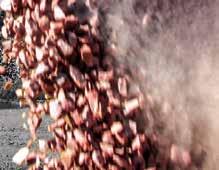





























cow,





 Mielke
Mielke

















report than meets the






more



The U.S. Agriculture Department’s latest data shows output at 18.28 billion pounds, up 1.5% from September 2021. The 24-state total, at 17.5 billion pounds, was up 1.6%. It is the third monthly increase in 2022 and revisions raised the 50-state August total by 15 million pounds to 19.03 billion, up 1.7% from a year ago instead of the 1.6% increase originally reported.
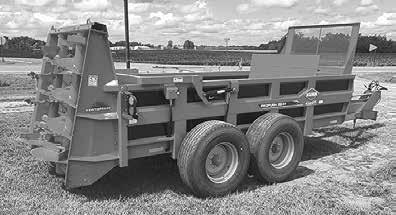
Cow numbers were expected to rise, but the September herd totaled 9.41 million, down 2,000 head from August numbers which were revised 14,000 head lower. The September herd was up 6,000 from a year ago, the rst time since September 2021 the herd size was above a year ago, but was 8,000 fewer than the peak in May.
StoneX Dairy Group called the report neutral to slightly bullish, and with only 52,000 cows added to the herd over four months, 2022 has presented the weakest herd expansion seen in the U.S. over the last 15 years.
Output per cow averaged 1,943 pounds, up 27 pounds, or 1.4%, from September 2021. August output was revised up 4 pounds to 2,022 pounds.
Third quarter milk output was up 1.2% from 2021, with cow numbers unchanged from second quarter but 29,000 less than third quarter 2021.
California output totaled 3.3 billion pounds in September, up 0.5% from a year ago. Cow numbers were up 4,000, and output per cow was up 20 pounds. Wisconsin produced 2.6 billion pounds, up 0.9%. Cow numbers were down 7,000, but output per cow was up 30 pounds from a year ago.
Idaho was up 2.4% on a 30-pound gain per cow and 6,000 more cows. Michigan was down 0.7% on a loss of 11,000 cows. Output per cow was up 40 pounds. Minnesota was up 0.6%, thanks to a 45-pound per cow gain offsetting an 8,000-cow drop. New Mexico was down 3.3% on a 16,000-cow drop. A 40-pound increase in output per cow could not offset the loss in cow numbers.
New York was up 2.2%, thanks to a 55-pound gain per cow offsetting a loss of 3,000 cows. Oregon was down 0.9% on a loss of 1,000 cows and unchanged
output per cow. Pennsylvania was off 0.1%, on a drop of 5,000 cows. Output per cow was up 15 pounds. South Dakota was up 14.9%, thanks to 25,000 more cows, but output per cow was down 10 pounds. Texas was up 8.5% on 30,000 more cows and a 70-pound gain per cow.

Vermont was unchanged, thanks to a 45-pound gain per cow offsetting the loss of 3,000 cows. Washington was down 1.2% on 7,000 fewer cows, though output per cow was up 30 pounds.
USDA’s October Livestock Dairy and Poultry Outlook said based on recent milk production information, the forecast for the average number of milk cows in 2022 has been increased 5,000 head to 9.41 million as a more rapid pace of expansion is expected in late 2022. The projected average yield per cow was adjusted higher for the remainder of 2022 at 24,110 pounds.
More dairy cows are expected in the rst half of 2023, and productivity is expected to be higher. Cow numbers were increased 10,000 head to 9,425 million. Milk per cow was raised 20 pounds to 24,320 pounds, according to the USDA.
Dairy cow culling fell in September. An estimated 260,500 head were sent to slaughter under federal inspection, according to the latest livestock slaughter report, down 5,600 head from August and 4,100, or 1.5%, below September 2021. Culling in the nine months totaled 2.28 million, down 59,800, or 2.6%, from 2021.
Culling in the week ending Oct. 8 totaled 60,000 dairy cows, down 1,100 from the previous week but 600 head, or 1%, above a year ago.
Dairy cow slaughter has exceeded 2021 levels for three consecutive weeks, according to StoneX; however, the market share of dairy cows being processed as part of the beef market has fallen from year-ago levels. Total cattle slaughter is also up and has exceeded yearago levels for the last seven weeks. Feed costs and availability are blamed. That coupled with the strong cash price for cattle is lending plenty of fuel to incentivize farmers to sell their cows.
International dairy markets remain bearish. The Oct. 18 Global Dairy Trade weighted average dropped 4.6%, following the 3.5% decline Oct. 4. Traders brought 64.8 million pounds of product to market, down from 68 million Oct. 4. The average metric ton price fell to $3,723, down from $3,911.
Declines were led by skim milk powder, down
6.9%, following a 1.6% slip Oct. 4. Whole milk powder was down 4.4% after slipping 4%. Cheese was down 3.9% following a 3.8% decline. Anhydrous milkfat and butter were down 2.7% and 2.6% respectively, after AMF fell 1.7% Oct. 4 and butter was down 7%.

StoneX said the GDT 80% butterfat butter price equates to $2.1468 per pound, down 5.8 cents after dropping 16.50 cents in the last event, and compares to CME butter which closed Friday at a world high $3.20. Cheddar, at $2.1632, was down 9 cents after losing 8.2 cents, and compares to Friday’s CME block cheddar at $2.0575. GDT skim milk powder averaged $1.4744 per pound, down from $1.5864 (11 cents). Whole milk powder averaged $1.5519 per pound, down from $1.6208 (7 cents). CME nonfat closed Friday at $1.42 per pound.
StoneX said Southeast Asia purchases declined substantially from the last event along with Europe and Africa, while North Asia purchases increased.



HighGround Dairy said so far, buyers are not concerned about the slow start to the New Zealand milk production season.

The GDT is waiting on China. President Xi Jinping kicked off his Communist Party Congress Oct. 16. His zero-COVID policies remain in place, locking down major cities, which has greatly weakened China’s economy and its purchases.

Cooperatives Working Together sales this week totaled 1.1 million pounds of American-type cheese and 77,000 pounds of cream cheese. The product is going to customers in Asia and Middle East-North Africa through February.
CME cheddar blocks closed Oct. 21 at $2.0575 per pound, up 0.75 cents on the week and 24.75 cents above a year ago. The barrels climbed to $2.2050 on Wednesday but closed Friday at $2.09, down 3.50 cents on the week after losing a dime the week before, but were 22.75 cents above a year ago and just 3.25 cents atop the blocks. Only one car of block was sold all week and 13 of barrel.
Midwest cheesemakers view the barrel-block price inversion as an inhibitor, said Dairy Market News. Barrel averages have topped the blocks since April as barrel inventories remain snug. Cheese demand for all varieties is strong, and Midwest vats are running as actively as cheesemakers are either keeping up or






running behind orders. Milk availability has tightened despite growing output, said DMN.
Looking westward, export cheese demand remains strong, especially from Asian buyers. Cooler weather is contributing to cow comfort and thus milk output.
Butter climbed to $3.20 per pound Tuesday and stayed put, up 2.50 cents on the week and $1.3650 above a year ago. There were no sales all week at the CME.
Butter demand is exactly where contacts expected it to be in mid to late October: vigorous, said DMN. Plants are churning or micro-xing to their full ability to keep up with demand, but minds ponder how long the price will remain in the clouds. Cream availability continues to grow, and contacts do not foresee a tight cream market in the near-term, particularly as the holidays approach, said DMN.

The higher milk output and resulting cream supply is a result of cooler weather out west, and milk is moving steadily into Class II production. Some plants are acquiring additional cream to maximize production and meet current demand. Other plant’s schedules are limited due to labor shortages or scheduled maintenance. Some retail customers are fervently looking for additional butter, said DMN, as they underestimated their fourth quarter needs.
Grade A nonfat dry milk fell to the lowest price since Oct. 5, 2021, closing Friday at $1.42 per pound, 11.75 cents below a year ago. Thirteen cars sold on the week.
CME dry whey closed Friday at 44 cents per pound, a quarter-cent lower and 17.75 cents below a year ago, with one sale reported on the week at the CME.

Checking demand; August total cheese utilization hit 1.2 billion pounds, up 1.9% from August 2021, up 1.6% domestically and up 5.9% on exports, according to HighGround Dairy’s Lucas Fuess in the Oct. 24 Dairy Radio Now broadcast.
August marked the strongest year-over-year gain since March, he said, driven mostly by rm demand for American-style cheese. And, while the data is delayed here in October, he said it helps explain why prices have remained above $2.
Butter disappearance totaled 185.6 million pounds, down 3.3% from a year ago, with domestic usage down 7.5%, while exports were up 118.8%. Fuess blamed the higher prices for the domestic downturn, but the weaker butter production and declining stocks keep the price rmly supported. He warned that the timing of the butter price downfall could come any day. As soon as end users realize they are good on supply into the holidays and traders become concerned over holding that last load of expensive butter, then we might tumble pretty quickly.
Nonfat-skim milk powder totaled 221.7 million pounds, down 3% from a strong year ago number. Domestic use was up 39.8% while exports were down 17%.
U.S. uid milk sales looked a little better in August. The latest data shows sales of U.S. packaged uid products totaled 3.6 billion pounds, down just 0.8% from August 2021. Conventional product sales totaled 3.4 billion, up 0.7% from a year ago. Organic products, at 241 million pounds, were up 2.1% and represented 6.6% of total sales for the month.
Whole milk sales totaled 1.26 billion pounds, up 3.1% from a year ago, up 1.2% year to date and represented 34.2% of total sales YTD. Skim milk sales, at 186 million pounds, were down 2.8% from a year ago and down 8.2% YTD.
Packaged uid sales for the eight months totaled 28.6 billion pounds, down 2.2% from 2021. Conventional product sales totaled 26.6 billion, down 2.3%. Organic products, at 1.9 billion, were down 1.5% and represented 6.7% of total sales.
The November federal order Class I base milk price was announced at $24.09 per hundredweight, up $1.38 from October, $6.11 above November 2021, and the highest November price ever, topping to the November 2014 high by 3 cents. It also equates to $2.07 per gallon, up from $1.55 a year ago. The 11-month average stands at $23.76, up from $16.61 a year ago and $16.64 in 2020.

Fluid consumption used to utilize over a third of U.S. milk output, but those days are long gone. The Sept. 28 Daily Dairy Report stated that uid use in the rst six months of 2022 only accounted for 18.5% of U.S. total output, down from 18.9% in 2021, but compares to 25.3% in 2012, for example.
As I pointed out last week, Coca-Cola’s Fairlife product is making a gallant attempt to bring milk drinkers back. It has reportedly seen double-digit growth this year, according to the Sept. 26 Dairy Industry SmartBrief.
The Oct. 7 Dairy and Food Market Analyst said
plant-based brands are embracing dairy because the plant-based category is no longer growing, and many companies are nding themselves in trouble. For example, compared to its peak, Beyond Meat’s stock price has decreased by 94%.
Similarly, oat milk producer Oatly’s stock has decreased by 92% compared to its peak, and the Very Good Company, a Canadian plant-based cheese and meat brand, is down 98% from its high. Though not to the same extreme, Danone, the owner of plantbased milk company Whitewave Foods, has seen its stock price struggle. Since announcing the purchase of Whitewave July 16, the company’s stock has decreased by nearly one-third, the Analyst said.
Down on the farm, margins continued to decline the rst half of October on weaker milk prices and steady to higher cost feed, according to the latest Margin Watch from Chicago-based Commodity and Ingredient Hedging LLC.


USDA’s October WASDE report conrmed lower yield and production estimates for corn and soybean crops which reduced forecasted ending stocks, the MW reported. This along with a slower-than-normal start to planting in Argentina due to abnormal dryness has helped to maintain a rm tone in the markets. Although milk prices have declined recently, they remain elevated from a historical perspective, supported by strong exports and butter prices.
Speaking of crops, the USDA’s latest Crop Progress report shows the U.S. corn harvest is 45% complete, as of the week ending Oct. 16, up from 31% the previous week, 5% behind a year ago and 5% ahead of the ve-year average. 53% was rated good to excellent, 7% behind a year ago.
The report also shows 96% of the soybeans dropping leaves, 2% ahead of a year ago and 2% ahead of the ve-year average. Harvest is at 63%, up from 44% the previous week, 5% ahead of a year ago and 11% ahead of the ve-year average. 57% of the beans are rated good to excellent, 8% ahead of a year ago.
Edgar. $2,000 Swiss Timothy Brubacker, Colby. Many good cows $1,250-1,650. Late lactation, small and blemished
$1,000 and down.
Springing Holstein heifers $1,300-1,675. Opens 95-1.40. Single birth Holstein heifer calves $20-55.



Breeding Bulls $750-1,400 market bulls $91-100.

Choice and Prime Holstein steers $125-138. Top $141.50 in Thorp. Beef cross $135-142. Holstein feeder steers $103-135NT. Holstein bull calves mostly $75-120. Up to $175 on Wednesday. Beef cross bull and heifer calves $150-300. Sows $63-71. Butchers $76-91. Boars $30-36 20% of Market cows sold $75-83. Top Holstein $89. 50% sold $62-74 3x3x8 grass mix $55-85. Rounds and squares grass $45-70. Alfalfa $70-115NT As always we really appreciate your business!!


 By Danielle Nauman danielle.n@dairystar.com
By Danielle Nauman danielle.n@dairystar.com

AMHERST JUNCTION, Wis. – Corby and Tania Groen, of Amherst Junction, established an organic dairy farm on the West Coast and then relocated to a new farm nearly 2,000 miles away from home.


“We had thought about moving before,” Corby Groen said. “That area (of Washington) used to be a big dairy area. In the mid-1990s, there were over 500 dairy farms in Whatcom County. When we left, it was down to just about 60.”
The couple, previously of Lynden, Washington, began their organic journey in 2016. The Groens operated both an organic and a conventional dairy until 2018, when they sold the conventional dairy herd. With their children – Ryan, Kenya, Evert, Jimena, Corby and Acre – the Groens milked somewhere between 100 to 120 organic dairy cows.
The decision to become an organic dairy was a


logical one for the Groens, as grazing had been part of the family’s farm management system for decades.





“My dad had always grazed his cows, before it was really considered a thing,” Groen said. “Making the conversion to organic was really just a matter of completing the paperwork.”
With the organic transition, the Groens became patrons of Organic Valley.



But, despite establishing themselves as organic dairy producers, the socioeconomic factors of operating a dairy in a declining area were not the only factors the Groens considered before looking for a new locale.
“We were dealing with a drought out in Washington and that was making things difcult, especially being organic,” Groen said. “We were in the second year of what became a ve-year drought and had fed half our winter feed by August, and we were going into winter with very little in reserve.”
Thoughts of nding green pastures continued in the back of Groen’s mind, and then one day, he came across something that would become a game-changer for his family.
“I

said. “We decided
and








turned out to be what we were looking for.”
That initial trip to Wisconsin happened April 30, 2021.
“When we came to look at this farm, it needed some work and some updating, but it had everything we were looking for,” Groen said. “We would still be able to ship organic milk with Organic Valley with a more stable price. The grazing was good here, and the area wasn’t in a drought like we were in back home.”
A couple of more trips and work with lenders followed, and the Groens completed the purchase of the farm. They then began the arduous project of moving not only their family but their entire dairy farm halfway across the country. The Groens milked their cows at their new address for the rst time Sept. 19, 2021.
Before making the move, Groen said he culled hard, and 55 head of milking cows made the trip from the West Coast and were added to the partial herd of cows he purchased with the farm.

“Those rst few weeks here were complete hell,” Groen said. “During that time, I was questioning if I had made the right decision, but things eventually settled down, and everyone got into a routine.”
One year later, Groen said he does not regret the decision to pick up his farm and relocate. The Groens are back to milking 100 cows in a swing-14 parlor.
In Washington, the Groens’ herd consisted primarily of Jersey cows. At their new farm, the Groens have incorporated Holsteins and crossbred cows into the herd as well.

Groen said he is breeding the herd to Jersey bulls, although he has been crossing some of the Holsteins with Fleckvieh genetics to help improve the grazing efciencies of those cows.
“I really like Jerseys for their longevity,” Groen said. “They have good feet and legs. Mobility is important to me, as they have to walk as much as three-quarters of a mile every day. They do very well as grazing cows.”
Groen also appreciates Jerseys for the benet of increased combined fat and protein production over volume of milk produced.
“Jerseys help me maximize my Organic Valley quota while still being very efcient producers,” Groen said.






Groen breeds most of his herd using A.I., while using a bull to breed heifers. When making sire selection, Groen places his emphasis on choosing bulls that are plus for percentage of both fat and protein and plus for milk as well.
“Udders and udder health traits are really important to me as well,” Groen said. “The cows have to have well-attached, functional udders to do well with all of the walking required of them. They can’t have loosely attached
udders swinging all over. That just leads to problems.”
In addition to grazing, the herd is supplemented with grain throughout the year and then fed additional forages during the winter months.
As the family closed the books on their rst year as Wisconsinites, Groen said the positives of their relocation have outweighed the negatives.



“There have been a lot of challenges, but I would do it again in a heartbeat,” Groen said. “This area is just so much better suited to dairying, especially organic dairying.”




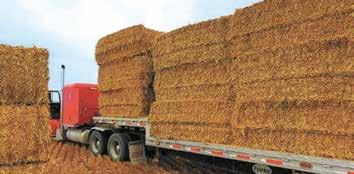

Sanborn, MN Meadowlands
Co-op 6.6513.62

Almena, WI Synergy Cooperative 6.0912.96 St. Cloud, MN
6.4913.46
Westby, WI Premier Co-op 6.3512.82
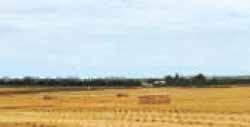
Cadott, WI
Grain Service 6.2013.07

Pipestone, MN Cargill 6.8913.71

Muscoda, WI Riverdale
Pro-Ag

Monona,
Innovative
Watertown, SD Watertown
Whitewater, WI Landmark
Dennison, MN Central
Belleville, WI Countryside
Glenwood, MN
6.3612.71
6.4513.24
6.4312.95
6.6913.58
6.5113.07
6.2513.38
6.5113.07
6.6113.52
Milk markets are feeling the pressure from declining international prices. Supply is up slightly, but the main reason for recent milk price weakness is inflation’s impact on consumer demand around the globe. Rather than providing a market update, here is some inflation insight.
My first recollection of hearing concerning economic news goes back to the 70’s energy crisis and high inflation caused by the U.S. dollar going off of the gold standard. Even as a young kid, I knew that inflation was not a good thing. The inflation that the U.S. is seeing today may not have the same root cause, but the impact of printing excessive amounts of fiat currency is having the same affect.
One of the definitions of inflation is, “An increasing amount of dollars chasing a fixed amount of goods.” The U.S. M2 money supply was expanded by 40% since the Covid outbreak began, but the amount of goods to buy with this new money was not. As a result, there is a lot of cash looking for a place to be spent. This is causing extreme demand for a limited amount of goods.
Inflation is extremely hard on lower- and middle-class consumers as they typically don’t have much disposable income. The family budget can get pretty thin when this
comfort cushion is needed to cover basic living expenses.
As with the 70’s and early 80’s inflation, excess cash in hand makes everyone feel more financially comfortable and willing to borrow money for big ticket items. That is disastrous for households and businesses when the fix for inflation kicks in. Higher interest rates!
This week I read an interesting article written by one of the world’s wealthiest investors who is predicting $30/ gallon diesel fuel. He supported it by saying green energy will not meet expectations, and that political conflicts and inflation will exacerbate it. Initially it seemed unrealistic, but after thinking about what happened in the 70’s I had to wonder if it is possible.

It has been a while since anyone has seen this type of financial pain. There is a generation alive today that has never experienced anything of this extreme. In my opinion the Fed has let us all down and let inflation get a solid footing. Now they have no choice but to raise rates to slow inflation. This will create increasing volatility and risk in commodities and investments.
*Futures and options trading
risk of loss and may not be suitable for everyone.

carefully consider whether such trading is suitable for you in light of your financial condition.


employer.
performance is not indicative of future results. DVi is an equal


320-634-3771

1145 East Minnesota Ave.• Suite 1 Glenwood, MN 56334




















before eldwork could be done, daily chores had to be completed.
The Mauks milk 87 cows and farm 270 acres, all of which goes into making feed, on their farm near Howard Lake.
Starting at 5:30 a.m., Harlan Mauk turned on the lights in his 87-stall tiestall barn to prepare for milking. He milked a few cows in buckets and fed calves before going back to the rest of milking.

“The rst part of the morning, milking the fresh cows and feeding the calves, takes me 20-30 minutes; sometimes more if a fresh cow isn’t coopera-


tive,” Harlan said.


Harvey Mauk, Harlan’s dad, came to help nish morning chores around 7:30 a.m.
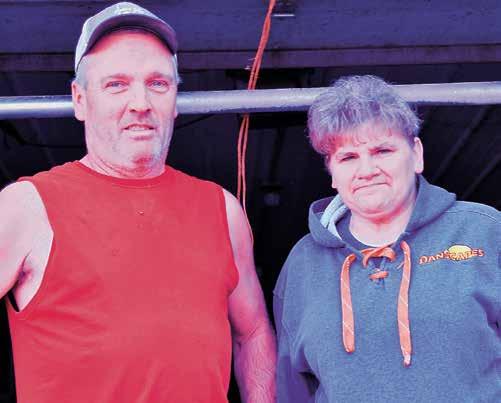

Milking was completed by 8:30 a.m.
Harvey pushed up feed and put lime

on the walk ways.
Harvey said he enjoys doing what he can to help.


“I’m 75 years old; I can’t milk the cows because I broke my foot a while back from a cow stepping on it,” he said. “I come out to help because it keeps me moving.”





Harvey nished his tasks and took a power takeoff shaft to the dealer to be replaced. The day before, the power take-off on the stalk chopper broke, and the Mauks could not nish making cornstalks.
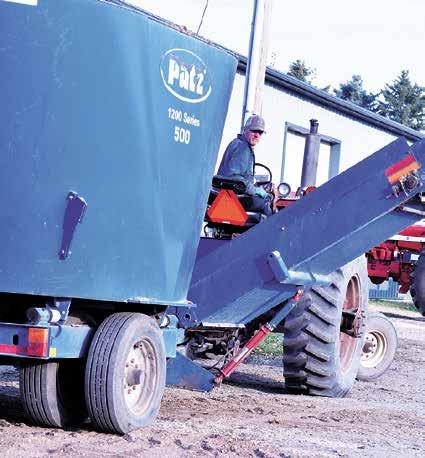

In the barn, once the mangers were cleaned, Harlan started mixing feed. The Mauks feed a total mixed ration of high-moisture corn, dry hay, haylage, corn silage and a protein mix. The ration is mixed in the morning and half is distributed following morning milking and the other half is put in front of the cows around 4:30 p.m. before evening milking.


To mix feed, Harlan uses a Case IH loader tractor to ll the mixer. This is a common theme throughout the farm as all of their tractors are Case IH.


Before spreading feed for the cows, Harlan took a minute to grab a caffeine boost and was off to the next task. Harlan then xed a leaking hydraulic line on the mixer.
Once the afternoon rolled around, Harlan’s brother, Dan Mauk, arrived to help with eldwork. Dan does much of the eldwork; he said he likes to have something to do after work and enjoys helping his brother.
Dan spent the afternoon baling cornstalks in one of the Mauks’ elds and for a neighbor down the road.
“I don’t mind helping out with eldwork and tractor maintenance,” Dan said. “I like keeping the tractors







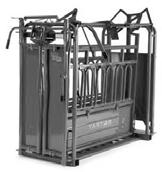
Calves on the Mauk farm are fed shortly a er the fresh cows are milked. Feeding calves takes 20-30 minutes.GRACE JEURISSEN/DAIRY STAR Harlan Mauk backs the mixer up to the barn for morning feeding. The cows’ ra on is comprised of a protein mix, high-moisture corn, dry hay, haylage and corn silage.
clean and well kept, because they last longer.”
While Dan continued to bale, Harlan began picking up round bales to store in the loang shed for bedding.
In the midafternoon, the farm welcomed a new edition. A dry cow had a healthy heifer calf. Harlan does all of the breeding on the farm.
“I like to breed the cows for good components and production while keeping their frames moderate, because the tie stalls aren’t built for massive Holstein cows,” Harlan said.

Harvey spent the afternoon with his brother, Lester Mauk, trying to get one of the older tractors running.
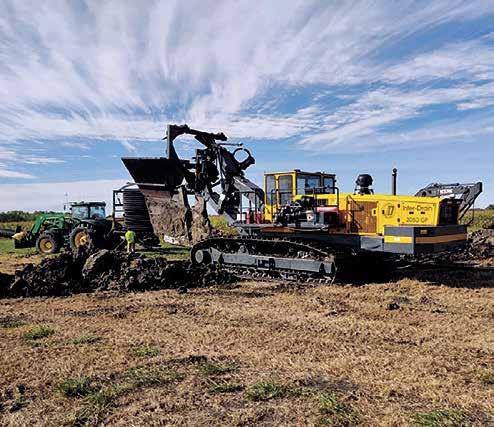
“This certainly isn’t helping my blood pressure,” Lester said.


Around 3 p.m., Harlan’s wife, Chris, checked in on the farm. Chris takes care of her parents during the day and helps with chores when needed.
Harlan picked up two loads of bales before he had to do evening feeding and begin milking, which started around 5 p.m. When it is not harvest season, Harlan said he likes to have milking completed by 7:45 p.m.



With milking completed and the last of the cornstalks baled, the lights in the barn were turned off. Everyone on the farm, from the cows to the Mauk family members, were ready for a welldeserved rest.



ABBOTSFORD, Wis. – When John Bigham Jr. moved from Ohio to central Wisconsin to begin his career as an organic dairy farmer, adding world traveler to his resume was not something he was expecting to do.

Then, he read about a scholarship to take part in a regional understanding tour being offered by the CROPP Cooperative through Organic Valley.
“In a million years, I never gured I would be chosen for the scholarship; I just applied because I never gured I would be selected,” Bigham said. “Imagine my surprise when I was notied I was indeed selected. My rst response was panic. ... I had to nd someone to do my chores.”
Bigham milks 40 cows on an organic dairy farm near Abbotsford. Bigham is transitioning into ownership of the farm.
With not much more than 60 days of notice, preparation for the trip went into full speed. Bigham procured chore help in preparation for leaving the country for the two-week trip to visit organic farms in Ireland and Scotland.

“It was the rst time I’ve ever left North America,” Bigham said. “We spent six days touring Ireland and then

John Bigham drinks milk purchased from the vending machine at Forest Farm in Aberdeenshire, Scotland. Bigham par cipated in a trip to Ireland and Scotland as an Organic Valley dairy farmer.
moved onto Scotland for another six days.”
Bigham departed the U.S. from Dulles Airport in Virginia and ew to Dublin. Despite the six- hour time difference and six-hour ight, Bigham hit
Turn to BIGHAM | Page 20





















































































 By Abby Wiedmeyer abby.w@dairystar.com
By Abby Wiedmeyer abby.w@dairystar.com
ORANGEVILLE, Ill. –Craig Miller grew up milking Holsteins. When he bought a Brown Swiss calf for his daughter as an April Fools’ Day joke, the breed stuck. What began as a joke turned into a show hobby for the couple’s daughter and then evolved into a career for Craig and his wife, Beverly, and their daughter, Kaylen.
“My brother-in-law always said if you’re going to get a cow, you have to get a brown one,” Craig said. “As a joke, I bought one. Well, the joke’s been on me ever since.”
The Millers milk 50 cows in a tiestall barn they built in 2012. Their herd is mostly Brown Swiss, with some Red and White Holsteins, Holsteins and one Guernsey.
Kaylen said she was partial to the Brown Swiss breed immediately.
“I just fell in love with their
big brown eyes and puppy dog docile personality,” Kaylen said. “My parents kept adding Swiss to the herd and grew it to what it was today. I’m very thankful for them.”
When Kaylen became involved in showing, they decided to build a barn so they could milk and house the show animals. The Millers said the building process was not an easy task because animals started calving in before they were ready. They bought the farm in 2006 and farmed the 347 acres for several years before building the dairy barn.
“We were supposed to be in the barn in December of 2012,” Craig said. “But, it was March of 2013 when we got in.”
While building the facility, the Millers were milking up to 15 cows along the outdoor feed rail with a portable milking machine all through the winter. They used a row of round bales as a windbreak.


Once the family was nally moved into the barn, life was only normal for a couple years before a tornado came through the farm in 2015 and wrecked the heifer building.
“It just kind of rolled one building up the hill on top of



everything,” Craig said.
The Millers repaired the shed and made it bigger and better able to serve the farm. Luckily, damage to the other buildings and new barn were minimal.
Today, the workload on the farm is balanced mostly between Craig, Beverly and their hired hand, Chelsey. Kaylen, a graduate of Iowa State University, works for Boviteq. She is also the National Brown Swiss youth advisor and helps organize junior activities at national shows and the national convention.
Kaylen helps with chores when she is able and is also in charge of naming and registering the calves as well as keeping cow management records.
Kaylen said growing up working with her parents has made an impact on her life’s path.
“I would not be the person I am and in the career path that I love without the farm background,” Kaylen said. “It
taught me the denition of hard work and dedication to a job.”

Calves are raised in huts and fed whole milk. Bull calves are kept on milk for 10 weeks, and heifer calves are fed milk for 12 weeks. The calves are fed hay and grain in the huts. Once weaned, they are moved to group pens.
The family also houses some of Beverly’s brother’s Holstein heifers. The heifers are put on pasture at the Miller farm, and Craig and Beverly get them bred with Kaylen’s help. Kaylen has started doing in vitro fertilization and uses the heifers as recipient animals.
Kaylen said the farm provided opportunities for her to grow as an individual. By attending fairs and other industry events, she learned to network.
“Just being able to communicate with the consumer from a different standpoint I feel like opens a lot of doors,” Kaylen said.

Besides dairy farming full
time, Craig also runs a custom chopping business with the help of another hired hand. The business keeps him busy between his own crops and the several silos he lls and the 30 silage bags he puts up for surrounding farms.


“I don’t go out looking for the work,” Craig said. “I do it more or less for a neighborly thing. It’s a lot between milking and chores.”


Craig said his favorite thing about farming is working outside.
“I’ve been in the barn since I was 3 years old, and I’ve milked cows probably since I was 7,” Craig said. “It’s all I know. I can’t put in the hours I used to, but tomorrow’s always another day.”
Craig said he would like to get back down to about 40 animals to ease the workload until Kaylen is more available to help. Kaylen plans to return to the farm full time within the next ve to 10 years.


250 cows, 320 acres
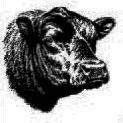
We did 400 corn stalk bales the last three days. We are hauling them home today. I would say 95% of the corn is done in the area. The average is around 170180. I have heard some as high as 240 and low as 100. Farmers are getting tillage done and hauling bales. We have to haul manure on our soybean ground. It’s mostly the sludge (sand and solids). There have been a lot of corn field fires around here. We’ve seen the fire trucks go by three times in the last week.

40 cows, 340 acres
We have taken out 150 acres of corn and have around 50 acres left. Most of the corn is at 17-18% moisture. The corn is running close to 200 bushels an acre on heavy ground and 100-110 on the light ground. We did 300 rounds bales of corn stalks and I would like to do another 150. As soon as we are done, we can haul pit manure and start tillage. It’s dry out there; we need rain. A lot of people around here are getting to the end of their harvest.
300 cows, 430 acres
We have been hauling solid manure and will start on the pit today.
We haul it our self with a 9,500-gallon tank.


We put up 35 acres of hay and wrapped it on Sat. (Oct. 20).
We have a neighbor that is hitting the corn hard right now. We plan to make some corn stalks from their fields. The rye we seeded early looks good and the rye we planted on the corn fields is just starting to poke through. We had enough snow to cover the ground one morning. The fields are dry.

BRENT ZIEGLER





300 cows, 650 acres We finished corn Oct. 22. Yields were down at least 15%, which considering the lack of rain isn’t too bad. Corn on corn ground and corn on alfalfa ground especially did not do well. We were not able to get any high moisture corn because it dried so fast. Had to harvest everything as dry corn, 20-22 % moisture corn went in our silo and all the 17% moisture corn we sold. We are making corn stalk bales today (Oct. 26), we hope to finish this weekend. Then we will just have tillage left to work on next week. We have been taking things a little bit slower lately because it has been so dry and windy and we don’t want to start any wildfires.
ROSS NELSON

100 cows, 540 acres
Done with all corn as of Oct 22. Yielded right about average, we were pleased with yield. We had our neighbor help us get earledge done about two weeks ago. Got all of our corn stalk bales made. We don’t have much tillage to do because we put in a lot of cover crops. We are working on hauling out manure, got all the liquid done, now working on the bedding
RICHARD SCHWEER
41 cows, 205 acres
Soybeans are done, they were below average because the spring was so wet, we couldn’t get into the field until June. Corn was just shy of 200-bushel, which is average for us. We finished corn silage and dry corn three weeks ago. We put up 139 corn stalk bales, they were the best corn stalk bales I’ve ever made. We do need rain, but overall, I can’t complain about the harvest season. Currently we are hauling out manure, and moving some fence lines to clear more land. Haven’t started tillage yet just because we will be putting in some tile yet this fall.

RICK MILLER

130 cows, 269 acres

I still have some corn to combine. We chopped our late planted corn two weeks ago. I need to do 300-400 bales of corn stalks. My son-in-law did a couple hundred bales already. They have combined 1,500 acres and have 500 acres left. The corn is running 200-230 and was down to 16% moisture. There is still quite a bit of corn out in the fields. We haven’t done any tillage. North of here a guy did 200 acres of corn and averaged 290 and someone did 250 acres of soybeans and it averaged 103 bushels an acre.
JAMIE HAAG
220 cows, 520 acres
A lot of people are doing high moisture corn in our area. It sounds like moisture is anywhere between 19-33% in our area. Most people have beans about done. Almost everyone has corn silage done. Our cover crops are sprouting so we are excited about that. Our manure pit will need to be emptied next week.






140 cows, 160 acres
Beans are all done in our area, they were slightly above average as far as yield. Corn is 80% done in our area. Corn was very varied, some spots did well, some did not depending on what the soil type was. Doing corn stalk bales right now (Oct. 25), we are about half way done with that. For how dry it was, it is surprising to see how long the cornstalks took to dry down enough to bale. We will be all done with harvest in about another week to ten days. A lot of manure getting hauled out right now. Some guys are getting field work done, I don’t do any fall tillage, but others guys in the area are working on it.

240 Cows, 750 acres
We are fairly dry, but the corn is not drying down. Our high moisture corn is still at 32% and we like to be around 30% to run it through the Hammermill and put it through the bagger.
Our yields will be such that we will not have any dry corn left over to sell. The beans don’t want to dry back down either.
We will hopefully start hauling some manure here in the next week.
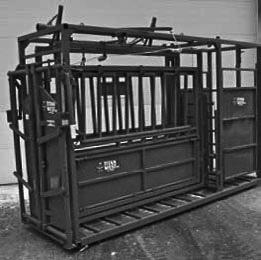

cows,
Things are




the snow was a little nerve-racking
we didn’t have our beans done yet and then they needed to dry back down. We did get them done Oct. 20, and they averaged between

NATHAN KLING
530 cows, 1,700 acres

and 60 bushels per acre. We were pleased with that because we didn’t think there was really enough vegetation for that kind of yield. We made some soy stubble bales for bedding

then seeded the soybean ground down with winter rye that we will use for spring forage. Now we are just waiting to do our dry corn and make some corn stalk to bales. There is a fair amount of manure getting hauled right now in the area. It has been a pretty good fall for getting things done.
400 cows, 1,675 acres
We’ve been combining mostly beans and a little corn and finished beans Oct. 21. The yields were pretty good at 60-70 bushels/acre. We also started making high moisture corn Oct. 20 and are going to put up 20,000 bushels. We had about 6,000 done as of Oct. 25. We also put in over 100 acres of a rye cover crop and are probably going to do some more yet too. Every year, we try to put in even more cover crops than the year before.
All of our corn silage is done. We still have 50 acres of beans to get off. We are getting ready to haul liquid manure. That will take about two weeks to get done. We will have a couple days of making bean and corn stalks. Otherwise, we are working on putting equipment away and winding the season down.

1,600 cows, 2,500 acres

We were still winding down on chopping corn as of Oct. 24 with about 100 acres left, but we should be finished by the end of the week. It was at 66-67% moisture when we chopped on the 22nd. We’ll refill a bunk that we started feeding out of already because we’re out of room. We also have a little over 100 acres of high moisture corn to do. We’ll maybe start that later in the week or next week. Our rye is up 1.5 inches already.
ground in Ireland ready to take on the forthcoming adventure.
“One of the rst things that struck me on the trip was how hard it was to nd a taxi at the airport,” Bigham said. “Nothing really opens before 9 a.m. either. It was hard to nd breakfast in the mornings before the tours left.”
Once in Dublin, Bigham met up with the rest of the tour group, which consisted of about 30 organic farmers.
Throughout the 12-day tour, the group visited a dozen farms.
“In Ireland, there are 11,000 dairy farms,” Bigham said. “There were cows everywhere, it seemed. The average herd is about 90 cows or so. The herd size has increased since the European Union did away with the milk quota system. Now, the size of the dairies are more limited by their land base and the equipment needed to farm.”
Bigham said Irish dairy farms do not feed a lot of grain, and that the focus of the dairy farms is on keeping inputs as low as possible.

“One thing that surprised me is that out of all those farms, there are only





about 70 that are certied organic,” Bigham said. “While they are very conscientious about their C02 emissions, being certied organic is not as common as it is here.”
According to Bigham, the Irish dairy industry is almost exclusively an export market, with little product being used for domestic consumption.

As a grazier himself, Bigham took great interest in how the Irish dairymen utilize grazing on their dairies. Bigham learned that the climate of Ireland allows for a much longer grazing season than is available in Wisconsin. Bigham said Irish dairies typically graze between 280 to 300 days a year, and Scottish dairies have a grazing season more similar to that of Wisconsin’s.
“They rely a lot on rye grass there,” Bigham said. “However, it was really hot and dry there this summer, so we didn’t see a lot of grass. I’m not sure if it was just because of the drought, but they tend to graze much shorter than we do here.”
On-farm processing was a theme among some of the farms Bigham had
the chance to visit on the tour. Farms produced everything from cheese and ice cream to gelato with their milk.
One of Bigham’s favorite stops was at Forest Farm Dairy in northeast Scotland in Aberdeenshire, where the Willis family milks about 150 cows and makes yogurt and gelato as well as operating an on-farm specialty store, gelateria and coffee shop.
“They had diversied their on-farm processing to retail milk using Scotland’s rst milking vending machines,” Bigham said. “Those were really neat. People brought their bottles in and dispensed the milk into the bottles.”
With all of the on-farm processing and diversication, Bigham said the organic milk price paid to the Irish and Scottish dairy farmers equated to $20$26 per hundredweight.


Besides touring the farms, Bigham said the group had ample opportunities to take in the countryside and enjoy the culture of the two countries. The group traveled as far southwest in Ireland as the town of Limerick and Adare and as far northeast in Scotland as the town of
Aberdeen.
“We visited the Cliffs of Moher; it was the rst time I had ever been to the ocean,” Bigham said. “I was really struck by how windy it was. One thing that amazed me is that they grazed sheep right up to the edge of the ocean.”
Bigham said he enjoyed soaking in the culture of both countries.

“The people in Ireland were super nice everywhere you went,” Bigham said. “In Scotland, the farmers we met and visited with were really nice, but the locals in the towns we stayed in were not nearly as hospitable.”
The amount of history in the two countries struck Bigham too.
“Everything there is just so old,” he said. “All the buildings, the streets, the architecture. There is so much history in everything around you. It is pretty astounding to think that all those places are thousands of years old when everything here in the U.S. is relatively new, comparatively. I’m so grateful that I was selected to receive the scholarship and have this opportunity. It was really a once-in-a-lifetime thing for me.”












609
610
627
642
15.09
19.18
87.2
648 Large Rounds 11.02 6.63 66.2
649 Large Rounds 11.93 20.2 134.4
588 Large Rounds 12.45 7.51 83.04
593 Large Rounds 12.83 18.55 119.04
594 Large Rounds 12.46 5 90.15
21.12 $95.00
24.95 $60.00
25.77 $190.00
22.58 $135.00
25.69 $190.00
27.66 $125.00
596 Large Rounds 14.59 20.66 142.47 2 17.7 $165.00
604 Large Rounds 14.37 10.14 80.83 2 20.96 $100.00
613 Large Rounds 11.37 13.93 120.71 2 21.87 $180.00
617 Large Rounds 11.2 8.82 77.19 2 14.87 $85.00
618 Large Rounds 13.09 20.36 131.4 2 23.89 $180.00
623 Large Rounds 14.48 15.3 96.2 2 19.22 $145.00
624 Large Rounds 12.9 10.15 91.07 2 15.3 $115.00
625 Large Rounds 12.23 4 56.75 2 22.31 $60.00
626 Large Rounds 14.1 13.08 101.39 2 17.42 $125.00
632 Large Rounds 15.13 11.44 85.57 2 21.05 $70.00
633 Large Rounds 14.27 8.09 83.9 2 22.05 $87.50
634 Large Rounds 14.27 8.09 83.9 2 22.2 $90.00
635 Large Rounds 24.99 22.39 118.28 2 24.84 $75.00
637 Large Rounds 11.84 5.58 79.19
638 Large Rounds 13.56 10.73 85.11
639 Large Rounds 12.8 5.3 63.12
591 Large Rounds 13.12 17.95 118.85
606 Large Rounds 12.15 21.6 162.09
622 Large Rounds 11.85 16.83 109.5
640 Large Rounds 11.6 19.56 135.79
644 Large Rounds 12.15 21.6 162.09
646 Large Rounds 13.09 19.38 138.62
657 Large Rounds 13.49 9.1 82.69
24.99 $85.00
20.79 $90.00
21.87 $60.00
18.96 $140.00
20.29 $225.00
19.58 $170.00
19.58 $160.00
19.14 $190.00
19.36 $175.00
29.66 NS
598 Large Rounds 11.21 9.35 84.26 24.94 $120.00
603 Large Rounds 10.81 6.29 87.04 26.1 $100.00
630 Large Rounds 14.05 6.72 73.44 8.92 $50.00
658 Large Rounds NO TEST 26 $30.00
650 Large Squares 9.64 6.29 81.2 1 21.59 $130.00
651 Large Squares 8.89 7.27 77.54 1 21.56 $125.00
581 Large Squares 13.23 19.15 108.26 2 25.61 $180.00
584 Large Squares 13.23 19.15 108.26 2 24.61 $180.00
586 Large Squares 15.72 18.03 95.65 2 21.42 $140.00
595 Large Squares 14.06 17.66 93.42 2 20.92 $135.00
615 Large Squares 10.25 20.36 149.22 2 26.37 $250.00
654 Large Squares 10.85 18.54 122.99 2 24.53 $200.00
608 Large Squares 14.1 17.6 97.01 1&2 20.63 $125.00
621 Medium Squares 14.26 14.05 105.42 1 22.64 $165.00
579 Medium Squares 13.48 20.34 131.97 2 22.44 $240.00
582 Medium Squares 13.9 20.29 122.47 2 22.34 $170.00
590 Medium Squares 14.11 20.74 134.13 2 23.41 $175.00
592 Medium Squares 13.74 23.52 160.67 2 20.49 $210.00
620 Medium Squares 12.65 14.05 104.85 2 22.78 $150.00
655 Medium Squares 10.39 18.28 121.83 2 24.56 $200.00
605 Medium Squares 14.47 22.01 152 3 17.09 $200.00
612 Medium Squares 14.31 25.01 152.26 3 22.76 $160.00
653 Medium Squares 11.02 19.39 153.97 3 26.27 $255.00
580 Medium Squares 16.2 24.34 201.5 4 25.39 $250.00
619 Medium Squares 13.86 22.74 181.39 4 21.92 $270.00
652 Medium Squares 12.26 22.23 180.13 4 27.58 $270.00
656 Medium Squares 11 27.44 242.53 4 26.02 $250.00
611 Small Rounds 11.05 7.31 81.65 1 5.6 $90.00
614 Small Rounds 11.05 7.31 81.65 1 3.47 $95.00

631 SR/Large Rounds 8.31 8.31 72.96 1 34 $20.00
599 12.84 15.43 75.2 25.34 $100.00
602 12.84 15.43 75.2 25.75 $110.00
597 Large Rounds STRAW 34 $45.00
607 Large Rounds STRAW 34 $50.00
636 Large Rounds STRAW 34 $45.00
641 Large Rounds STRAW 34 $45.00
643 Large Rounds STRAW 26 $45.00
647 Large Rounds STRAW 34 $47.50
659 Large Rounds STRAW 34 $32.50
583 Large Squares STRAW 22.37 $115.00
587 Large Squares STRAW 21.92 $110.00
601 Large Squares STRAW 24.93 $125.00
585 Medium Squares STRAW 72 $37.50
589 Medium Squares STRAW 72 $35.00 600 Medium Squares STRAW 72 $37.50 616 Medium Squares STRAW 78 $45.00 629 Medium Squares STRAW 6 $40.00 645 SR/Large Rounds STRAW 26 $30.00 578 CORN STALKS 34 $35.00


1 tablespoon vegetable oil


1 medium onion, diced
1 medium red bell pepper, diced
1 medium green bell pepper, diced
1 pound ground sausage
10 eggs
Athens, Wisconsin
1/2 cup all-purpose flour
1 teaspoon baking powder


1/2 teaspoon black pepper
16 ounces cottage cheese
4 tablespoons butter
3 cups shredded cheese
Preheat oven to 350 degrees. Butter a 9-by-13 baking dish or pan and set aside. In a large saucepan, add the oil along with diced onion and peppers. Sauté until onions are translucent. Add the sausage and cook until browned. Pour into prepared baking dish. In a large bowl, beat the eggs until thick. Whisk in flour, baking powder, salt and pepper. Stir in cottage cheese, melted butter and shredded cheese. Pour egg mixture over sausage mixture and stir to combine. Bake for 30-35 minutes or until firm in the center.
1 pound ground beef
3/4 cup onion, chopped
3/4 cup carrot, shredded
3/4 cup celery, diced
1 teaspoon dried parsley flakes
2 cloves garlic
4 tablespoons butter
3 cups chicken broth
4 cups peeled potatoes, diced




1/4 cup all-purpose flour
12 ounces pepper jack Velveeta or regular Velveeta, cut into cubes
1 1/2 cups milk
3/4 teaspoon salt 1/4 cup sour cream
In a 3-quart saucepan, brown beef over medium-high heat; drain and set aside. In the same saucepan over medium heat, sauté onion, carrots, celery, basil and parsley in 1 tablespoon butter until vegetables are tender. Press garlic into pot and cook until just fragrant, about 1 minute. Add broth, potatoes and beef; bring to a boil. Reduce heat; cover and simmer for 10-12 minutes or until potatoes are tender. Meanwhile, in a small skillet, melt remaining butter. Add flour; cook and stir for 3-5 minutes or until bubbly. Add to soup; bring to boil. Cook and stir for 2 minutes. Reduce heat to low. Add cheese, milk, salt and pepper; cook and stir until cheese melts. Remove from the heat, blend in sour cream.
1 cup diced ham or bacon
1/2 cup diced onion
1/2 cup diced green pepper
2 cups shredded potatoes
1 cup milk
1 cup shredded cheese
eggs
and pepper
Combine ham or bacon, onion and green pepper together in large bowl. Scramble eggs with salt and pepper in separate bowl then add to ham, onion and peppers. Stir in milk and cheese. Stir well. Bake at 350 for 35-45 minutes. Works well to mix the night before and sit in pan overnight, then bake in the morning.
White’s
3.93BF 3.21P


health and
many
of this herd is
which 5 are EXTREME FANCY RED & WHITES, all ready to breed or short breds. Herd has not been scored for a approximately 5 years. Multi generation catalog will be available before auction day. Coming from J-Mor Holsteins Jim and Jean Moret, Prairie du Chien WI Owner phone number 608-326-8984.
COMPLETE HERD DISPERSAL #2
100 Holstein Dairy Cows. Parlor/freestall. Tank average 78# on 2x, 3.9BF 3.2P 180scc. AI bred and AI sired over 30 years, all bred Angus. Extensive vaccination program. Approximately 65% are 1st and 2nd lactation. Cannon Hills Dairy, Cashton WI
COMPLETE HERD DISPERSAL #3


31 Holstein Dairy Cows, includes a Jersey and a Jersey Cross. Very adaptable herd, accustomed to freestall, tiestall and milked in a parlor, not pushed averaging 60# herd includes (15) cows due January-February, bred to Angus, full vaccination program. Coming from Duane Goodnoe, Rib Lake WI




10 FANCY
John’s load of fresh cows topped the sale with his last load. 100% guaranteed sound. Coming from John Prososki, Wausau WI

14
Weekly
TOP ORGANIC
of

over 4,002
1,100 feeders
head of
$1,850-2,900! Many other
cows from $1,250-1,825.

$1,300-1,700,
springing































